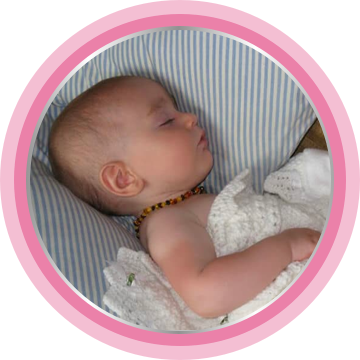The Trials of Teething and Natural Ways You Can Help Baby
Around the 6 month mark your apparently happy, settled baby may start getting fractious again, with sore, red, swollen gums, more dribbling, and quite possibly catastrophic nappy rash. It's teething time.
Although some babies may get their first teeth at around 4 or 5 months, and some later (all of ours were 7-9 months*), the symptoms will be the same and your poor little bub may be in considerable pain, usually for the first time. So just how can you do what mums and dads do best, and make it all better?

How do I recognise teething?
Some babies are lucky enough to have less pain, but even if they're not crying and fractious with the teething, they will probably dribble more, have red, flushed cheeks, have red, possibly swollen gums, and register some discomfort when feeding. Some babies will take to biting you, the cat's tail (yep, one of ours), toys or during breastfeeding, or they may be more restless at night and just generally feeling grumpy. If you run a clean finger over the front gums, you may well feel the cutting edge of the teeth underneath the surface.
Many babies will have runnier poo or a different coloured poo (remember that newborn poo chart!) and will often suffer from nappy rash. We used cloth nappies for all of ours and had very little nappy rash, but it was pretty awful every time new teeth were coming through. With all three it was, without doubt, the worst nappy rash we had!
If your baby suffers with this too, make sure they get lots of nappy-free time with the air on their bottom, change nappies often, and use cloth rather than disposables if possible when they do have to wear a nappy. Liberal application of a baby barrier cream like Bepanthen® was a lifesaver too to help protect against the causes of nappy rash!
How can I help my teething baby?
We were quite lucky as all of our girls were late teethers and not too bothered by their teeth coming in. But we didn't get off scot-free, so here's what worked for us, all natural and side-effect free:
1. Comfort.
Offer lots and lots of comfort and cuddles. Spend as much time interacting with baby as possible, playing and keeping him busy and distracted from the pain.
2. Breastfeed on demand.
This is one of those times breastfeeding comes into its own, providing comfort, warmth and perfect mummy time for as long as baby wants and needs it. And if you think they're 'comfort feeding', so what? If comfort is what they need, let them.
3. Cold foods.
Once your baby is eating (not before 6 months), offer them cold apple puree straight from the fridge or ice-cold sticks of cucumber, watermelon, apple, pear or nectarine to suck and chew on.

4. Your finger.
Yep, simple as it sounds, giving baby your finger to chomp down on, or simply rubbing your finger across her gums can give some relief from the throbbing pain. Try dipping your finger in a salve before offering it too. Either 2 tablespoons of coconut oil and 1 drop of peppermint or chamomile essential oil will help. Or try a drop of vanilla extract diluted down which provides a soothing effect.

5. Teething toys.
There are a wide array of teething rings, chew toys and other items available in all baby supply shops and larger supermarkets. The gel ones you can put in the fridge were the most effective we found, as the cold helps soothe baby's gums while he chews on the toy.
6. Chamomile.
Try cooled chamomile tea either from a sippy cup or tiny beaker such as the brilliant Babycup cups, or soak a clean flannel in strong tea then place in a freezer bag in the fridge or partly freeze before giving it to baby to gnaw on.
7. Mama jewellery.
Rather than carrying teething toys around and risking baby dropping them from the sling or carrier, we found teething necklaces for me to wear worked brilliantly. We have a lovely wooden and fabric bead one which our youngest adored. It has a piece of cloth on too for extra texture.
* N.B. Some children do not get their first tooth until much later, but if there is no sign by their first birthday consult your GP or health visitor.
Disclaimer:
Blog Articles in the Parent Zone section do not reflect the opinions of Bayer. They are reflections of real-life bloggers who provide subjective advice to consumers.


